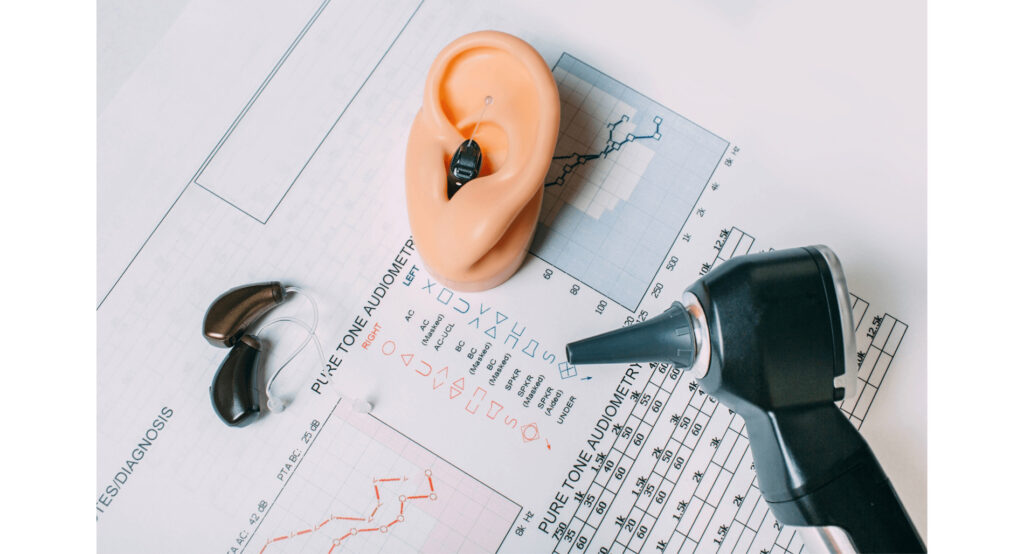In the symphony of life, our ability to perceive and interpret sounds is a fundamental element that often goes unnoticed until its absence becomes apparent. As a hearing professional, my mission is to guide individuals through the intricate process of hearing tests, providing insights into the latest advancements in hearing loss prevention, diagnosis, and management. This article aims to unravel the mystery of what happens during a hearing test and elucidate how to interpret the results, underlining the significance of early detection in preserving auditory wellness.
The Hearing Test Journey
The journey begins with a comprehensive assessment designed to explore the intricacies of auditory function. A skilled hearing professional will initiate the process by conducting an in-depth case history, delving into the individual’s medical history, exposure to noise, and any existing concerns. This information serves as the compass guiding subsequent evaluations.
Pure Tone Audiometry, the cornerstone of hearing tests, involves listening to a range of tones at different frequencies and volumes through headphones. This assesses the threshold at which an individual can perceive sound, creating an audiogram that depicts the extent of hearing ability across frequencies. The results help identify the type and degree of hearing loss, providing a roadmap for further interventions.
Speech Audiometry complements Pure Tone Audiometry by evaluating the individual’s ability to comprehend speech at different volumes. This test gauges the functional aspect of hearing, offering valuable insights into communication challenges faced by the individual.
The Tympanogram and Acoustic Reflex Threshold tests delve into the health of the middle ear, assessing the mobility of the eardrum and the reflexive responses to loud sounds. These tests aid in identifying conditions such as otitis media and contribute to a comprehensive understanding of the individual’s auditory health.
Otoacoustic Emissions (OAE) testing is another valuable tool that measures the sounds emitted by the inner ear in response to external stimuli. Absence or weakness of these emissions can indicate issues with the hair cells in the inner ear, shedding light on potential cochlear dysfunction.
Understanding the Results
Interpreting the results of a hearing test requires a nuanced approach that combines technical expertise with empathy. The audiogram, a visual representation of an individual’s hearing ability, charts the course for intervention. The configuration of the audiogram reveals whether the hearing loss is sensorineural (related to the inner ear or auditory nerve) or conductive (related to the middle ear), dictating the appropriate course of action.
For those with sensorineural hearing loss, hearing aids emerge as a beacon of hope. The latest advancements in hearing aid technology, such as artificial intelligence-driven adaptive algorithms and connectivity features, have revolutionized the hearing aid landscape. These devices can be customized to individual hearing profiles, seamlessly integrating into daily life while providing a lifeline to the auditory world.
Cochlear implants, a groundbreaking intervention for severe to profound sensorineural hearing loss, have witnessed remarkable advancements. Miniaturization and enhanced electrode designs contribute to improved outcomes, expanding the scope of cochlear implants beyond what was conceivable just a few years ago.
In the realm of conductive hearing loss, surgical interventions, such as tympanoplasty and stapedectomy, aim to restore the normal function of the middle ear. The advent of minimally invasive techniques has reduced recovery times and improved outcomes, marking a significant stride in the field.
The Future Soundscape
As we navigate the current landscape of hearing healthcare, it is crucial to cast an eye towards the future. Research into gene therapy holds promise for addressing congenital hearing loss, aiming to correct genetic mutations that underlie these conditions. The prospect of restoring hearing at a molecular level represents a paradigm shift in our approach to auditory wellness.
Moreover, advancements in neural prosthetics and brain-computer interfaces open new frontiers for individuals with profound hearing loss. These futuristic interventions seek to bypass damaged peripheral structures and directly stimulate the auditory nerve or brain regions responsible for processing sound, offering renewed hope for those for whom traditional interventions may be less effective.
Early Detection: A Compassionate Imperative
While we stride towards futuristic interventions, the importance of early detection cannot be overstated. Hearing loss, when identified early, allows for timely interventions that can mitigate its impact on an individual’s life. Beyond the technicalities of hearing tests and intervention options, it is essential to underscore the emotional and social dimensions of hearing loss.
The emotional impact of hearing loss can be profound, affecting an individual’s mental well-being and interpersonal relationships. By emphasizing the compassionate aspect of audiology, hearing professionals can create a supportive environment that empowers individuals to embrace solutions and embark on a journey towards auditory wellness.
In the symphony of sounds that enrich our lives, the role of hearing professionals extends beyond the technicalities of tests and interventions. It involves guiding individuals through a process that marries cutting-edge technology with empathy, unraveling the complexities of auditory health. As we stand at the precipice of aural advancements, the path forward is illuminated by a commitment to early detection, compassionate care, and a vision of a future where the harmony of sound is accessible to all.


